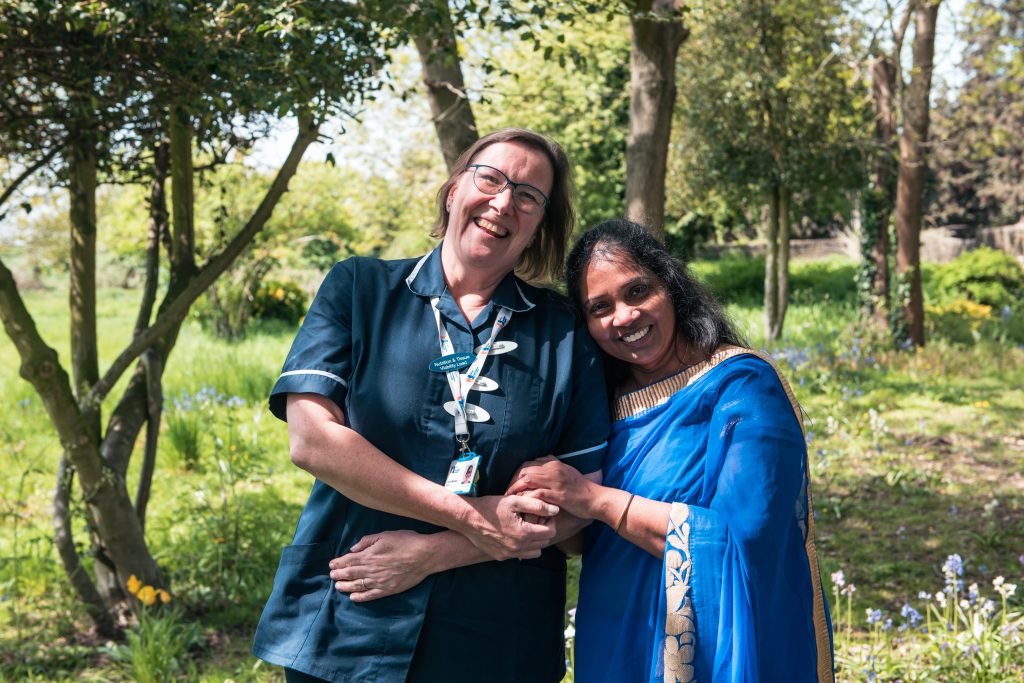Digital Affairs Support
When we are faced with a serious or terminal illness our digital affairs, like emails, social media accounts, photographs and videos, might seem like the least important thing to think about. But, in reality, thinking about what we want to do with them is really important.
The average person in the UK now spends over four hours a day online and during the course of our lives, we create a trail of digital information. This trail is sometimes called our ‘digital footprint’. And the sentimental value and monetary value placed on content we upload, purchase, and store online increases every year.
Our digital footprint might include:
- Photos uploaded onto social media sites.
- Messages shared between friends on messaging apps.
- Online shopping points and other digital assets held within online wallets and other financial accounts, like PayPal or online banking.
- Personal blogs, YouTube accounts, and websites.
- Subscriptions, for example to websites, streaming services like Netflix, online magazines.
When we die our digital footprint can help inform how we are remembered. This is often referred to as our ‘digital legacy’.
With fewer and fewer photos and videos existing in physical formats (printed photos, photo albums, videotapes etc) our digital legacy is becoming increasingly important. When someone dies these assets often become inaccessible, lost, deleted and claimed by the organisations where they are located.
So, it’s a great idea to start thinking about this in advance. So we can decide what our digital legacy will look like ourselves and who we would like to take responsibility for it after we have died.
A guide to organising your digital assets and planning your digital legacy
In this guide our Digital Research Fellow, James Norris, highlights the importance of making plans for our digital lives and provides ways in which you might want to do this.
Over the past 10 years James has explored and raised awareness about the importance that our digital lives have, both when we are alive and after we have died. In 2015 he launched the Digital Legacy Association at Hospice UK’s conference and founded the care planning platform MyWishes.
Whether you use a computer, mobile phone, or a tablet you should start:
- Planning what you would like to be done with them after your death.
- Identifying who should have access to them.
- Making a list of the online accounts and digital possessions held within them.
- Identify whether there is any specific information on them you would like to be stored somewhere else after you die. For example, important files, photos and videos.
- Writing your passwords in a secure location so they can be shared with trusted people. You could think about using a password manager like LastPass. This will store all your passwords securely in one place and can be added to over time. When you feel ready to pass on the information you will then only need to supply one username and password for your trusted individual/s to have access to everything you want them to.
- Help ensure that sentimental photos and videos remain accessible to those you care about following your death.
- Reduce the likelihood of financial assets being lost.
- Prevent family disputes.
- Reduce both solicitor fees and governmental taxation.
- Provide those close to you a list of contact details and other important people in your life. This can help them reach out to people and arrange funeral or memorial invites.
Whatever your wishes are, discuss them today with someone you trust.
For lots of people today our social media accounts act as diaries and accounts of our lives. They may store photos and videos from important events, demonstrate our values, ideas, and principles, identify the people that we are in contact with, and showcase our achievements and accomplishments.
Many social networks are no longer used and many have gone out of business. MySpace, Friendster and Flickr are just three examples of this. As society changes so does social networking. It is important to realise that social media sites and the media they contain will not exist forever.
Cloud storage accounts, like iCloud, Dropbox or Google Accounts, are also often used to keep important files, photos, and videos safe.
Whether you use social media, cloud storage accounts, or both think about how the content will have longevity both online and offline. And what you want to happen to them after you have died.
Social networks and cloud storage providers do not grant access to someone else’s account after one of their users has died. Photos can be extracted from other people’s social media profiles, however it can be difficult to do so. Making plans for your social networks and cloud storage platforms in advance is a great thing to do.
Here are some things you could request to happen to them:
- Have all your social media accounts closed and made inactive.
- Transfer control of your social media accounts to someone you trust by giving them your passwords.
- Keep your social media accounts open but without any new content being uploaded.
- Idenfiy the files, photos and videos in your cloud storage that you want to be kept and transfer these to someone else before closing the account.
- Transfer control of your cloud storage to someone you trust by giving them your password.
Within our ever increasing ‘paperless’ and digital society finding and accessing money, currencies and assets that are of a financial value can be difficult.
When someone dies this task can become extremely stressful and often leads to digital financial assets being lost, reclaimed by organisations, financial institutions and the state.
By documenting assets of a monetary value you can help ensure that the assets are received by the people and charities to whom you would like them to be gifted.
Email accounts can be used for a variety of different things. And they might contain a lot of important information about you that isn’t stored anywhere else.
They can be used for:
- Setting up other online accounts and in turn closing them.
- Paying bills.
- Managing ongoing subscriptions.
- Communicating with healthcare providers, government and legal bodies.
- An array of other personal and financial reasons.
It is important to plan what you would like to do with your email accounts and what you would like to be done to them so that anything attached to them can be dealt with accordingly and efficiently.
Whether you want someone to have access to your email accounts after you have died to carry out administrative tasks, or not, plans should be made and conversations had.
Planning shouldn’t be seen as something scary but something positive that might benefit you mentally and spiritually. At a later date, it might also help reduce confusion, the likelihood of assets being deleted, and help safeguard aspects of your digital legacy.
Tasks you might want to undertake:
- Think about how you might pass on access and passwords for your accounts. Discuss this with someone you trust.
- Print your favourite photos and share them with one or more people.
- If you use Facebook, backup your Facebook photos and videos to your computer or a cloud storage platform (like Dropbox) and decide what will be done with these after you have died.
- If you use Facebook, assign a legacy contact for your Facebook account. This will allow them to carry out a number of administrative tasks in your Facebook account after you have died.
- If you use Instagram, backup and transfer your Instagram photos and videos to your computer.
- If you use Google services (Gmail, Google Photos, Youtube etc) assign someone as your Google Inactive Account Manager.
- If you have a password on a mobile phone, computer or tablet decide how you might pass on your passwords for the devices.
- Consider creating a folder titled ‘my favourite memories’ on your desktop. Once created add photos, videos and other content that is of sentimental value. When you are ready to do so, save the folder onto a memory stick and give it to a loved one. Alternatively, you might want to email your favourite photos and videos to someone you trust.
- If you use a Cloud storage account for personal photos or videos find out how you might pass on access to a loved one. Each service has a different policy and some have ways in which sharing can easily take place.
- Document assets that are of a financial value in your Last Will & Testament.
- Document the wishes you have for all of your online accounts within a Social Media Will (sometimes called a Digital Will). This is a non-legally binding log of your accounts stating what you would like to happen with each. Once completed it can be emailed to someone you trust or printed and kept in a safe place.






